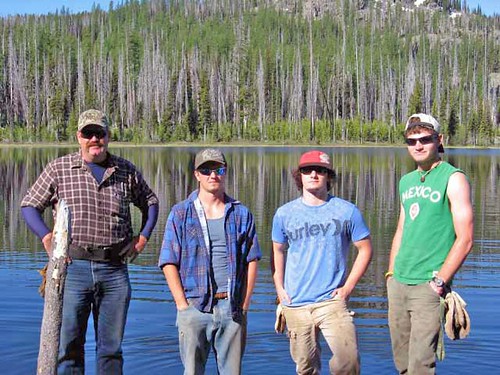
Doing more with less is a phrase we have all become accustomed to in recent years. U.S. Forest Service trail crews embody this spirit.
Recently, I had the opportunity to spend the day with a trail crew out of the Whitman district in the Wallowa-Whitman National Forest. Half of the crew was tasked to a project on a different part of the forest, but the five of us effectively cleared three miles of trail in the foothills of the Wallowa Mountains.
Crew leader, Todd Robinette, has seen many changes over the past decade. He’s seen his crew size dwindle and work load increase. On the other hand, he’s seen an increase in inter- departmental cooperation and input from the public. It’s obvious to Todd and his crew that visitors to the Wallowa-Whitman National Forest appreciate and depend on the work that his crew members accomplish.
Each year, the Whitman District is responsible for maintaining 280 miles of trail. These trails are used by recreationists, hunters, biologists and others. The trail crew cooperates with the wildlife department to install bird houses, add woody debris to rivers and streams to benefit fish habitat, and constructs aspen enclosures to protect young tree shoots. In addition, the Whitman crew maintains many of the campgrounds on their district.
Being a guy from “the office” I was expected to mainly take pictures and ask questions on our day out. So naturally I insisted on carrying the chainsaw and cutting deadfall during the majority of the day. This foolhardy gesture resulted in me trailing the crew and gasping for air on the hike out.
Two crew members will be entering the armed forces this fall. Cody Powell, 17, is studying to become an aeronautical engineer with the Air Force and Nathan Tanaka, 20, would like to be an Army Ranger. Andrew Livingston, 20, is studying to be an archeologist at the University of Oregon. Needless to say, I learned my lesson about going up against America’s best and brightest.
What I learned by spending a day with the Whitman District trail crew is that by working together and maintaining high expectations we can continue to accomplish significant benefits in resource management. I also learned that it’s not wise to try and out-hike a future Army Ranger.
The mission of the US Forest Service is to sustain the health, diversity, and productivity of the nation's forests and grasslands to meet the needs of present and future generations. Recreational activities on our lands contribute $14.5 billion annually to the U.S. economy. The agency manages 193 million acres of public land, provides assistance to state and private landowners, and maintains the largest forestry research organization in the world.
